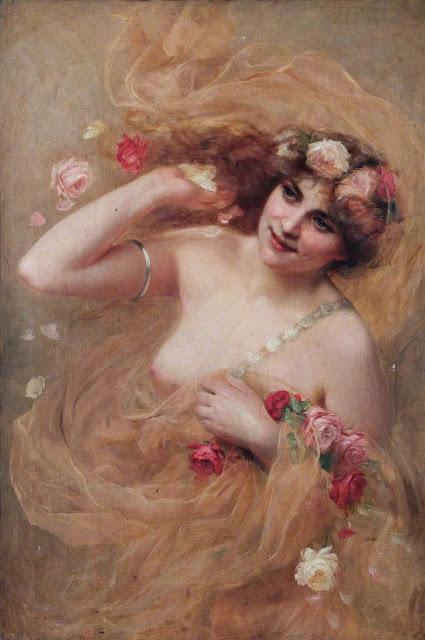
Nude with Roses (1886-1917)
Beatrice was born in 1864, one of 11 children born to George and Emma Offor. The family were well-off enough to be able to afford that many children because George was a ship broker and various other things that seem to fill up countless lines on census returns. 'Liberia' seems to be mentioned at one point. In the 1911 census he is listed as the 'Director of Public Companies' which seems far simpler. He also lived until 101 years old which is very impressive, especially in the context of this story, as you will see...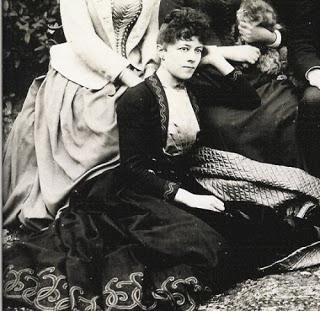
Beatrice Offor c.1890
Beatrice was born somewhere in the middle of her sibling group, which ranged from Emma, born 1851 to Evelyn, born in 1873. Surprisingly, all the children but Gertrude (1860-1862) survived childhood, and so Beatrice, her seven other sisters and two brothers all grew into adults. Also interestingly, only Beatrice, Evelyn and Frederick married (although I suspect George married too as he died in Heidelberg, Australia and I think there are members of the Offor family still living down under, in which case, hello to the lovely Australian Offors!)
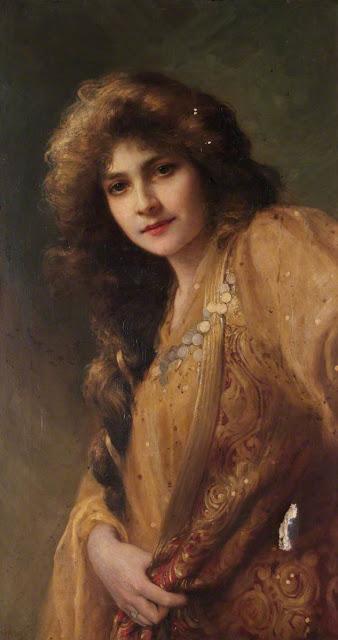
Aglaie (c.1907-1920)
Beatrice trained at the Slade School of Art, and after graduation showed her paintings in exhibitions including the Royal Academy. With such a big family, she was never short of models and it is reported that many of her female portraits are of her sisters. The pictures are beautiful and easy on the eye which is why once they were turned into engravings, they were enormously popular with the public, in much the same way as Henry Ryland was for the same reason.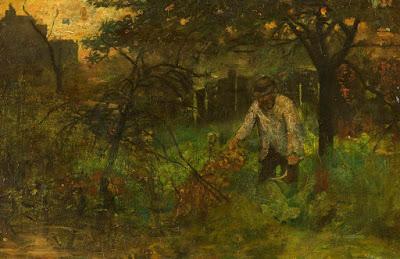
Old Chelsea (1880s) William Farran Littler
In 1892, Beatrice married Irish painter and sculptor William Farran Littler, who was living at the time in Cheyne Row in Chelsea. The couple had two sons - Ralph, born in 1893, but died a year later, and Eric, who was born in 1896 but did not survive the year. It might have been this that resulted in Littler's journey to the asylum, and in 1899 he too died of 'chronic brain disease' which is one of those handy terms which means everything and nothing.
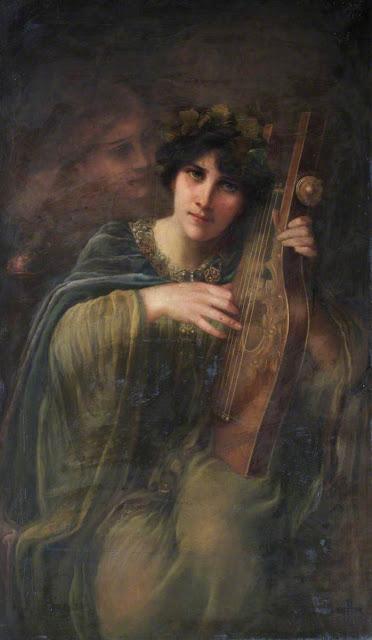
A Melody (c.1886-1906)
Beatrice was not the only Offor to suffer such heartbreak. Her brother Frederick got married and had a daughter, but Grace Offor died at only 10 years old. By the turn of the century, now alone, Beatrice continued to paint at her home in King's Road, Chelsea. In 1908 however, there is a pause in the misery, as Beatrice married for a second time. The lucky chap was James Beaven, a dried fruit importer who must have done very well out of dates as he left £30,000 when he died in 1926. He was a widower with four adult children, coincidentally including a daughter called Beatrice. The couple married and moved to live in Tottenham, North London.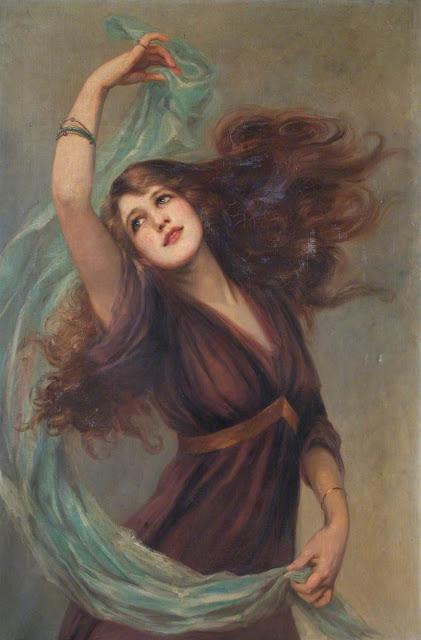
Esme Dancing (c.1907-1917)
Beatrice continued to produce pleasing paintings that were commercially popular, but public taste was beginning to turn away from pretty Victorian maidens to more modern matters. Whether that fall from public notice contributed to her ill health isn't clear, but in 1919 she suffered a nervous breakdown. Illness ravaged her and affected her ability to paint. She tried to throw herself out her a window but was prevented from doing so. The second time she tried, they were too late.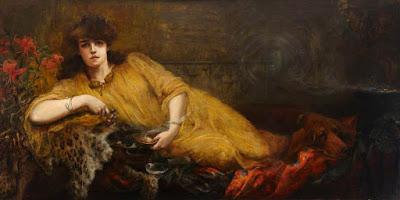
The Love Potion (c.1890)
In the summer of 1920, Beatrice Beaven, a fruit importers wife who used to be famous for painting young women, was found sitting on her bedroom window sill. Before she could be stopped, she jumped the 40-feet to the road below. As the nurse reached her, she pleaded 'let me die'. All of this was reported in the newspapers covering the inquest of her death, including the verdict of 'Suicide whilst of unsound mind'. What is interesting, if rather grim, is the number of newspapers who ascribe her suicide to the loss of her looks. In the Nottingham Evening Post, Beatrice's depression had 'played havoc with her personal appearance' and she had worried she would never paint again after illness. There is definitely a feeling that the loss of her looks had been the cause of her suicide, especially when coupled with the pathos of her beautiful female paintings. The Gloucester Echo is very plainly of this view, headlining the inquest with 'DIED BECAUSE SHE LOST HER BEAUTY'. She is buried at Ladywell Cemetery in Kent, along with the rest of the Offors, her second husband, and William Farran Littler and their two baby sons.
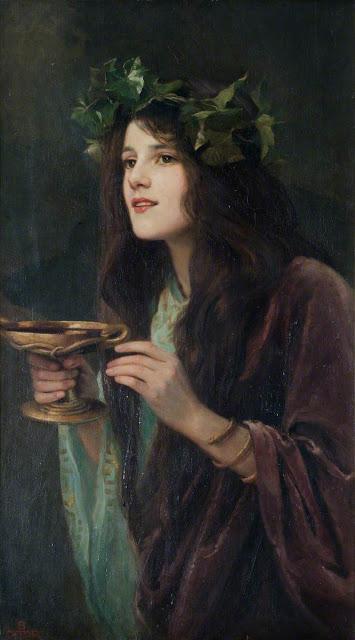
Circe (1911)
Over 40 of her pictures are housed in the Bruce Castle Museum in Tottenham, and are shown on the ArtUK site in all their glory. Her vision is very serene and beautiful, it's just such a shame her life was not blessed with the happiness she gave others through her work. Hopefully, Bruce Castle Museum will do another exhibition of her works again soon. I'm always up for a revival...

